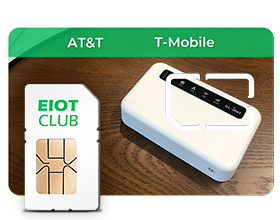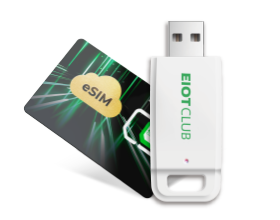Sim Card Sizes Unveiled: Find the Perfect Fit for Seamless Mobile Connectivity

Today, with the rapid development of mobile communication technology, SIM cards play a vital role. This tiny piece of plastic carries our identity and enables us to make calls, send messages and surf the Internet around the world. SIM cards can be said to have gone through four stages: Standard SIM (original card), Mini SIM (mini card), Micro SIM (micro card) and Nano SIM (ultra small card). In this article, we'll walk you through the evolution of card sizes.
SIM card size development history
First generation: Standard SIM (original card)
Back in 1991, the SIM card was a full credit card sized plastic card. The design was originally intended for ease of handling and operation, but it was quickly deemed too bulky, limiting the phone's design freedom and portability.
Second generation: mini SIM card
As devices such as mobile phones gradually become smaller, the need for smaller SIM cards also arises. Therefore, later in the mid-1990s, mini-SIM cards appeared. The mini SIM still retains the size of the metal contact area of the original SIM card, but the plastic frame has been significantly reduced. This type of SIM card was very popular in the early days of smartphones.
Third Generation: Micro SIM Card
As smartphone functionality increases, so does the need for space. Thus, the micro-SIM card (also known as Micro-SIM) was born. It was first introduced by Apple in its iPad in 2010 and quickly became a standard feature of smart devices. The micro-SIM further reduces the area of the plastic frame, allowing more space inside the phone for other components.
Fourth generation: Nano SIM card
But the tech world never seems to stop pursuing smaller. In 2012, Nano-SIM card came out. It is smaller than a micro SIM card and has almost only a metal contact area. This further provides design flexibility for a new generation of equipment manufacturers.
Different card dimensions
Currently, most mobile phones on the market use Micro-SIM cards (also known as 3FF SIM cards, the third type of SIM card) and Nano-SIM (4FF).
|
Name |
Also known as |
Length |
Width |
|
Standard SIM |
1FF |
85 mm |
53 mm |
|
Mini-SIM |
2FF |
25 mm |
15 mm |
|
Micro-SIM |
3FF |
15 mm |
12 mm |
|
Nano-SIM |
4FF |
12.3 mm |
8.8 mm |
Large SIM cards only support Mini-SIM slots, dual-cut SIM cards support both Mini-SIM and Micro-SIM slots, and triple-cut SIM cards support Mini-SIM, Micro-SIM and Nano-SIM slots at the same time. The IoT card we usually use is usually a three-in-one card, also known as a "three-in-one card"
How to choose the right size SIM card
When you're wondering which is the perfect SIM card size you should choose for your device, check the following questions:
- What size is your device's SIM card tray or slot designed for?
- Does your SIM provider support the SIM card size required for your device?
- Are additional adapters or brackets required to accommodate different size SIM cards?
If you plan to swap SIM cards between devices of different sizes, you may want to choose a "3-in-1" SIM card (available in standard, Micro, and Nano sizes).
In this way, when changing devices, you only need to split the SIM card into the appropriate size.
Once you determine this information, you can get the correct size SIM card or remove the appropriate size from an existing multi-size SIM card.
Conclusion
The size evolution of SIM cards reflects the continuous progress of mobile communication technology and our continuous pursuit of portable device forms. Every change is to adapt to new technological needs while bringing richer experience and convenience to consumers!It is also very important to choose the right size card among different sizes of SIM cards.
Read More
- Sim Card Sizes Unveiled: Find the Perfect Fit for Seamless Mobile Conn– Eiotclub
- Unleashing the Power of IoT SIM Cards: Connecting Everything to the In– Eiotclub
- Triple-play SIM card Vs Double network SIM card, which do I choose?– Eiotclub
- EIOTCLUB App: Simplify Your IoT Device Management– Eiotclub
- Empower Your Security: Best Prepaid SIM Solutions for Outdoor Reolink Cameras– Eiotclub

























 Black Friday
Black Friday






